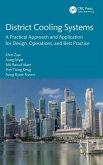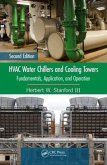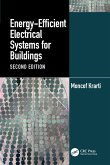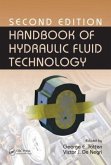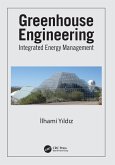- Gebundenes Buch
- Merkliste
- Auf die Merkliste
- Bewerten Bewerten
- Teilen
- Produkt teilen
- Produkterinnerung
- Produkterinnerung
Hollow Fiber Membrane-based Evaporative Cooling Systems covers the principles, applications, and optimization strategies of the evaporative cooling method. It demonstrates how this technology is a promising solution for fulfilling substantial cooling needs while reducing energy consumption.
Andere Kunden interessierten sich auch für
![District Cooling Systems District Cooling Systems]() Khin ZawDistrict Cooling Systems188,99 €
Khin ZawDistrict Cooling Systems188,99 €![HVAC Water Chillers and Cooling Towers HVAC Water Chillers and Cooling Towers]() Herbert W. Stanford IIIHVAC Water Chillers and Cooling Towers319,99 €
Herbert W. Stanford IIIHVAC Water Chillers and Cooling Towers319,99 €![Cooling our Environment Cooling our Environment]() Kalpana SutariaCooling our Environment15,99 €
Kalpana SutariaCooling our Environment15,99 €![Energy-Efficient Electrical Systems for Buildings Energy-Efficient Electrical Systems for Buildings]() Moncef KrartiEnergy-Efficient Electrical Systems for Buildings145,99 €
Moncef KrartiEnergy-Efficient Electrical Systems for Buildings145,99 €![Absorber Types in Vapour Absorption Refrigeration Systems Absorber Types in Vapour Absorption Refrigeration Systems]() A. ManiAbsorber Types in Vapour Absorption Refrigeration Systems206,99 €
A. ManiAbsorber Types in Vapour Absorption Refrigeration Systems206,99 €![Handbook of Hydraulic Fluid Technology, Second Edition Handbook of Hydraulic Fluid Technology, Second Edition]() Handbook of Hydraulic Fluid Technology, Second Edition322,99 €
Handbook of Hydraulic Fluid Technology, Second Edition322,99 €![Greenhouse Engineering Greenhouse Engineering]() Ilhami YildizGreenhouse Engineering104,99 €
Ilhami YildizGreenhouse Engineering104,99 €-
-
-
Hollow Fiber Membrane-based Evaporative Cooling Systems covers the principles, applications, and optimization strategies of the evaporative cooling method. It demonstrates how this technology is a promising solution for fulfilling substantial cooling needs while reducing energy consumption.
Produktdetails
- Produktdetails
- Verlag: CRC Press
- Seitenzahl: 170
- Erscheinungstermin: 4. August 2025
- Englisch
- Abmessung: 240mm x 161mm x 14mm
- Gewicht: 426g
- ISBN-13: 9781032893211
- ISBN-10: 1032893214
- Artikelnr.: 72211692
- Herstellerkennzeichnung
- Libri GmbH
- Europaallee 1
- 36244 Bad Hersfeld
- gpsr@libri.de
- Verlag: CRC Press
- Seitenzahl: 170
- Erscheinungstermin: 4. August 2025
- Englisch
- Abmessung: 240mm x 161mm x 14mm
- Gewicht: 426g
- ISBN-13: 9781032893211
- ISBN-10: 1032893214
- Artikelnr.: 72211692
- Herstellerkennzeichnung
- Libri GmbH
- Europaallee 1
- 36244 Bad Hersfeld
- gpsr@libri.de
Xin Cui is Associate Professor with the School of Human Settlements and Civil Engineering, Xi'an Jiaotong University. He received his Ph.D. degree from National University of Singapore (NUS) in 2015 under Prof. Kian Jon Chua's supervision. Dr. Cui's main research interests are advanced air-cooling technologies, green airconditioning systems, and building energy analysis. He has published more than 60 international peer-reviewed papers and participated in editing two academic monograph chapters. In the past five years, as a principal researcher, he has undertaken more than ten scientific research projects, including the funding supports from the National Natural Science Foundation of China, Key Research and Development Program of Shaanxi, and China Postdoctoral Science Foundation. He has been invited to participate in the International Energy Agency (IEA) Solar Heating and Cooling Programme (Task 63) to carry out international cooperation. He has received the Best Paper Award during the 12th International Symposium on Heating, Ventilation and Air-Conditioning (ISHVAC 2021), and the Best Presenter Award in AUA-SEGT 2022 academic conference. Weichao Yan is a doctoral candidate at Xi'an Jiaotong University in China, specializing in HVAC (Heating, Ventilation, and Air-Conditioning) engineering. His research focuses on evaporative cooling technology, optimization design of hollow fiber membrane modules, enhanced heat and mass transfer, and building energy conservation techniques. He has published 20 papers in renowned journals such as Applied Energy, Energy, and Applied Thermal Engineering. Yan has presented his work at over ten international academic conferences, delivering oral presentations on his research findings. Chua Kian Jon holds the position of Associate Professor in the Department of Mechanical Engineering at the National University of Singapore. Since 1997, his research has been focused on renewable energy systems and heat recovery systems. He has extensive experience in both modeling and experimental work, particularly in the realm of thermal energy systems, where he has applied nanomaterials and nanotechnology. With over 230 international peer-reviewed journal publications, 6 book chapters, and 6 recent monographs, Chua is a recognized authority in advances in thermal energy and cooling systems. He has been elected to prestigious fellowships, including those from the Royal Society, the Institution of Engineering and Technology, the Energy Institute, and the IMechE. His publications have received over 15,100 citations, with a current h-index of 65. He frequently delivers plenary and keynote talks based on his research findings. He leads several multi-million-dollar competitive research grants as Principal Investigator and has received numerous local, regional, and international awards for his groundbreaking research endeavors.
1. Introduction. 2. Working Principle of Hollow Fiber Membrane
Based Evaporative Cooling Systems. 3. Hollow Fiber Membrane
Based Evaporative Air Cooler. 4. Hollow Fiber Membrane
Based Evaporative Water Cooler. 5. Effect of Random Fiber Distribution on the Evaporative Cooling Performance. 6. Vacuum
Assisted Hollow Fiber Membrane
Based Evaporative Water Cooler. 7. Conclusions and Future Recommendations.
Based Evaporative Cooling Systems. 3. Hollow Fiber Membrane
Based Evaporative Air Cooler. 4. Hollow Fiber Membrane
Based Evaporative Water Cooler. 5. Effect of Random Fiber Distribution on the Evaporative Cooling Performance. 6. Vacuum
Assisted Hollow Fiber Membrane
Based Evaporative Water Cooler. 7. Conclusions and Future Recommendations.
1. Introduction. 2. Working Principle of Hollow Fiber Membrane
Based Evaporative Cooling Systems. 3. Hollow Fiber Membrane
Based Evaporative Air Cooler. 4. Hollow Fiber Membrane
Based Evaporative Water Cooler. 5. Effect of Random Fiber Distribution on the Evaporative Cooling Performance. 6. Vacuum
Assisted Hollow Fiber Membrane
Based Evaporative Water Cooler. 7. Conclusions and Future Recommendations.
Based Evaporative Cooling Systems. 3. Hollow Fiber Membrane
Based Evaporative Air Cooler. 4. Hollow Fiber Membrane
Based Evaporative Water Cooler. 5. Effect of Random Fiber Distribution on the Evaporative Cooling Performance. 6. Vacuum
Assisted Hollow Fiber Membrane
Based Evaporative Water Cooler. 7. Conclusions and Future Recommendations.


